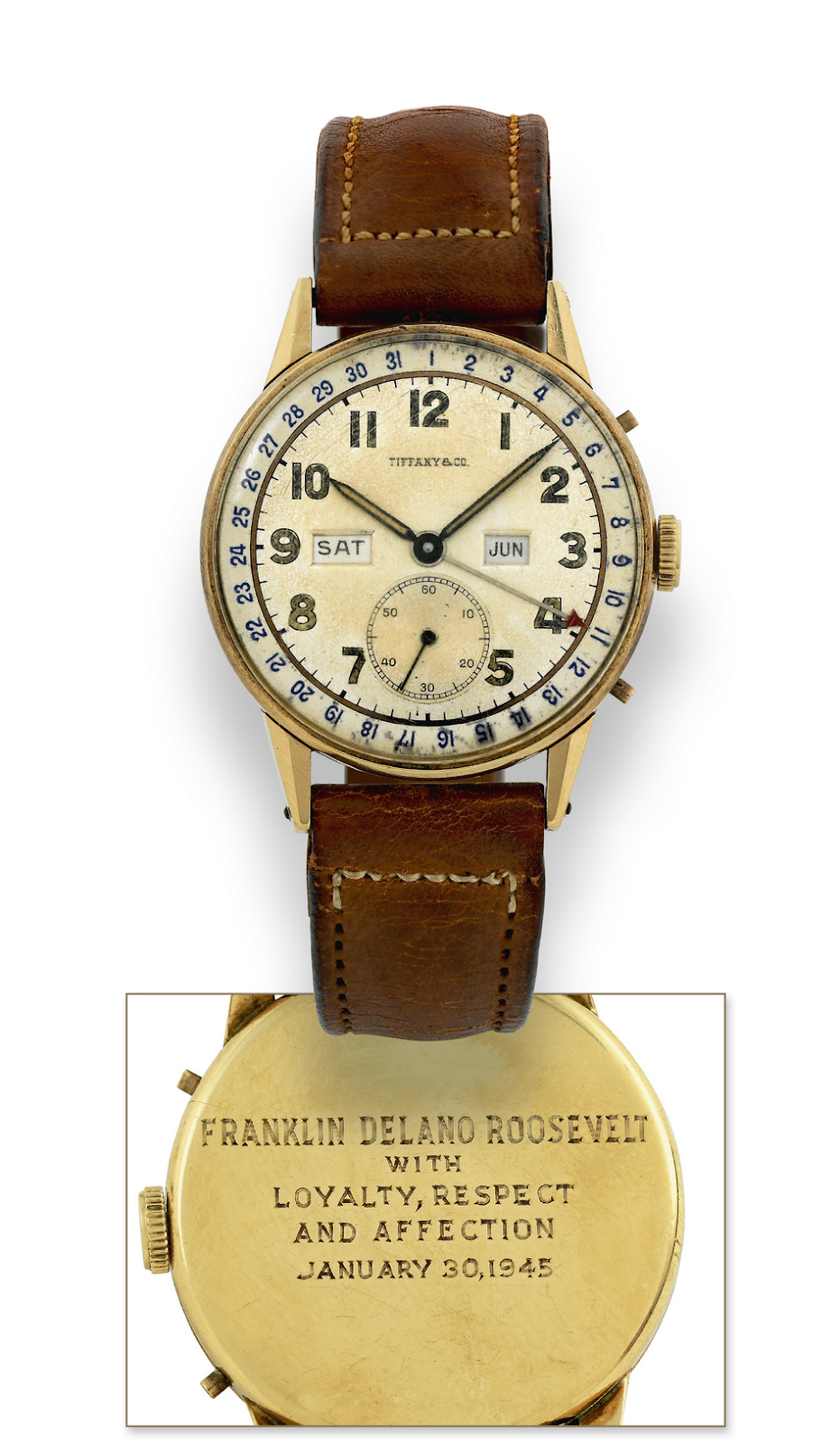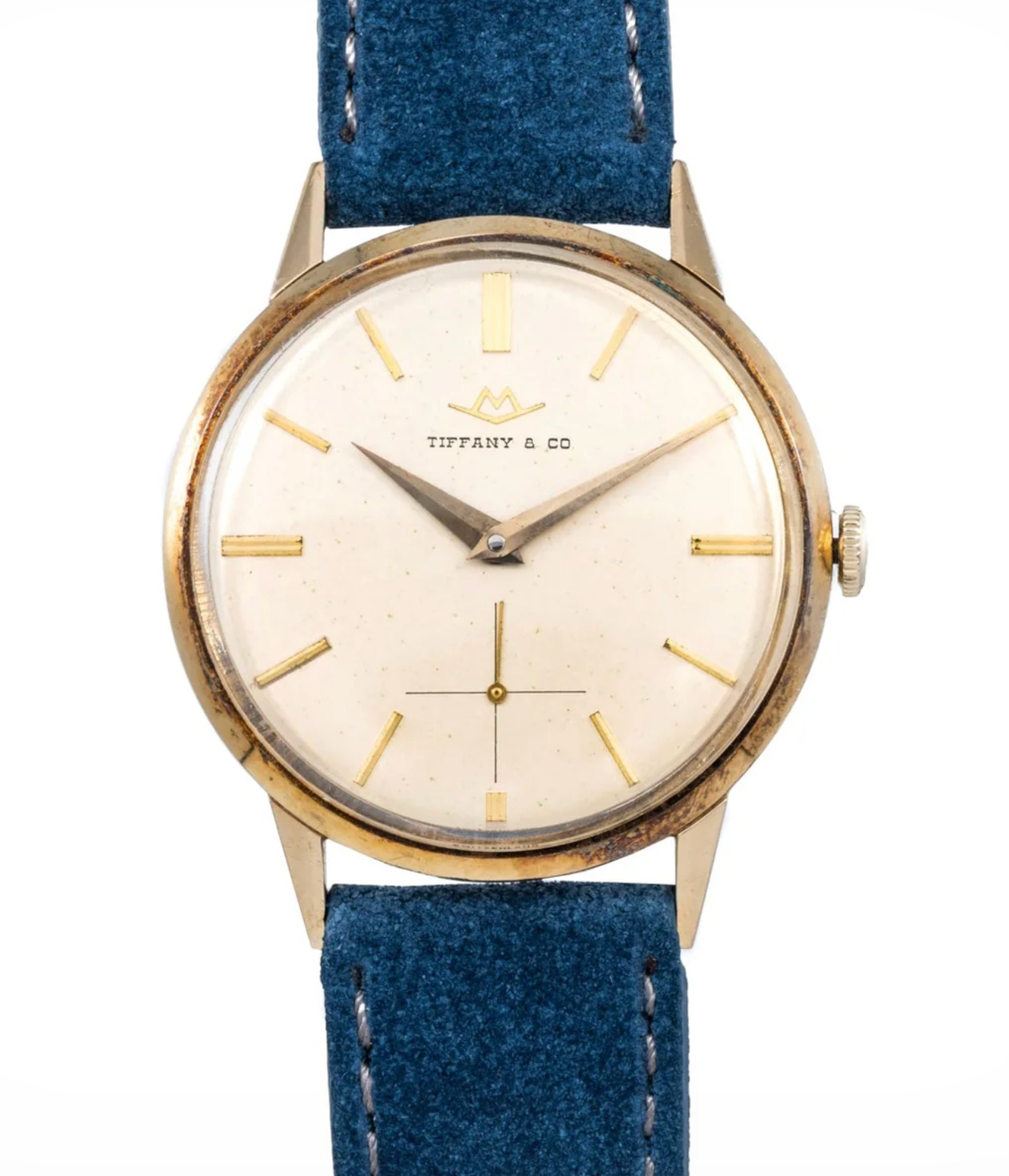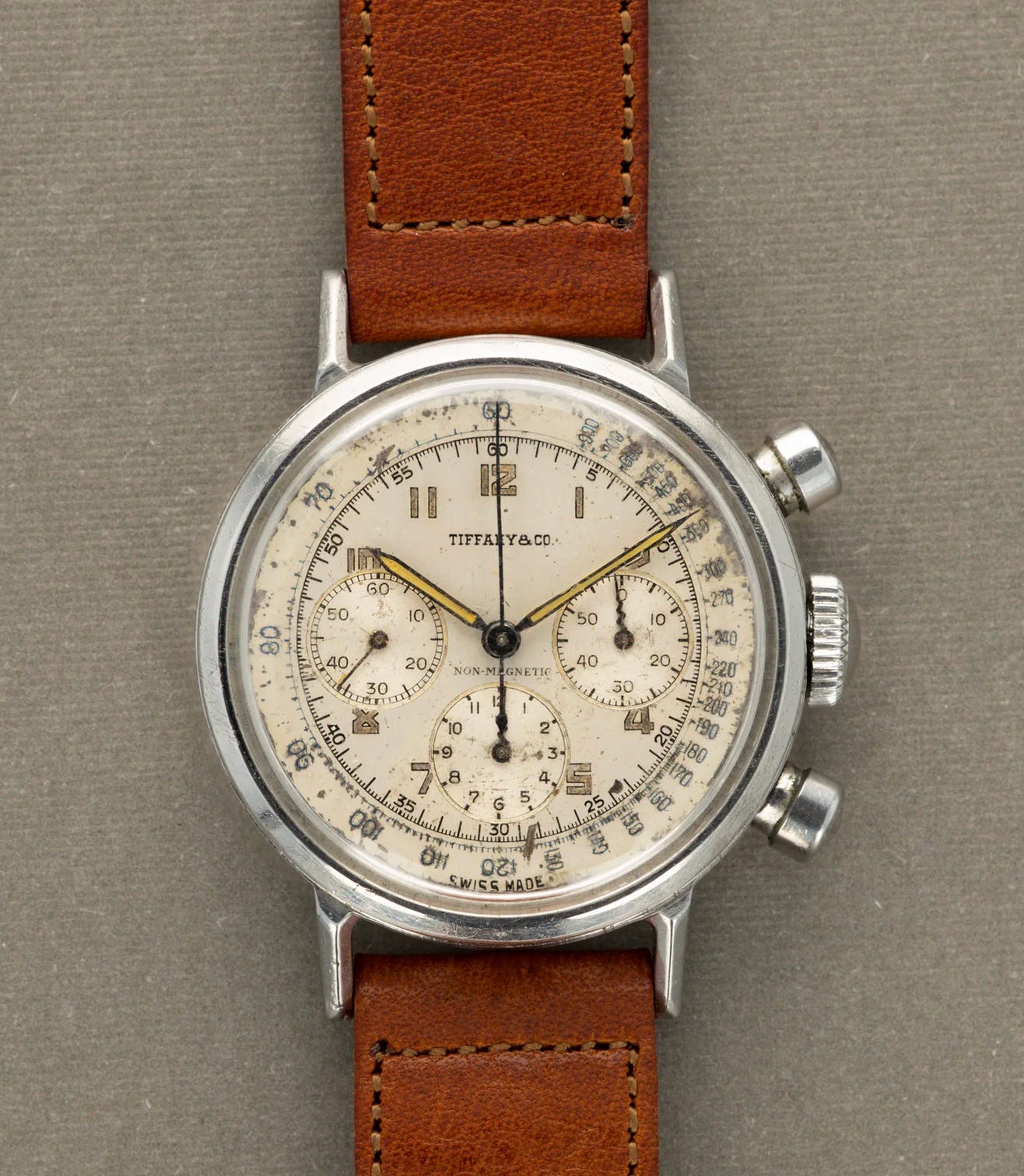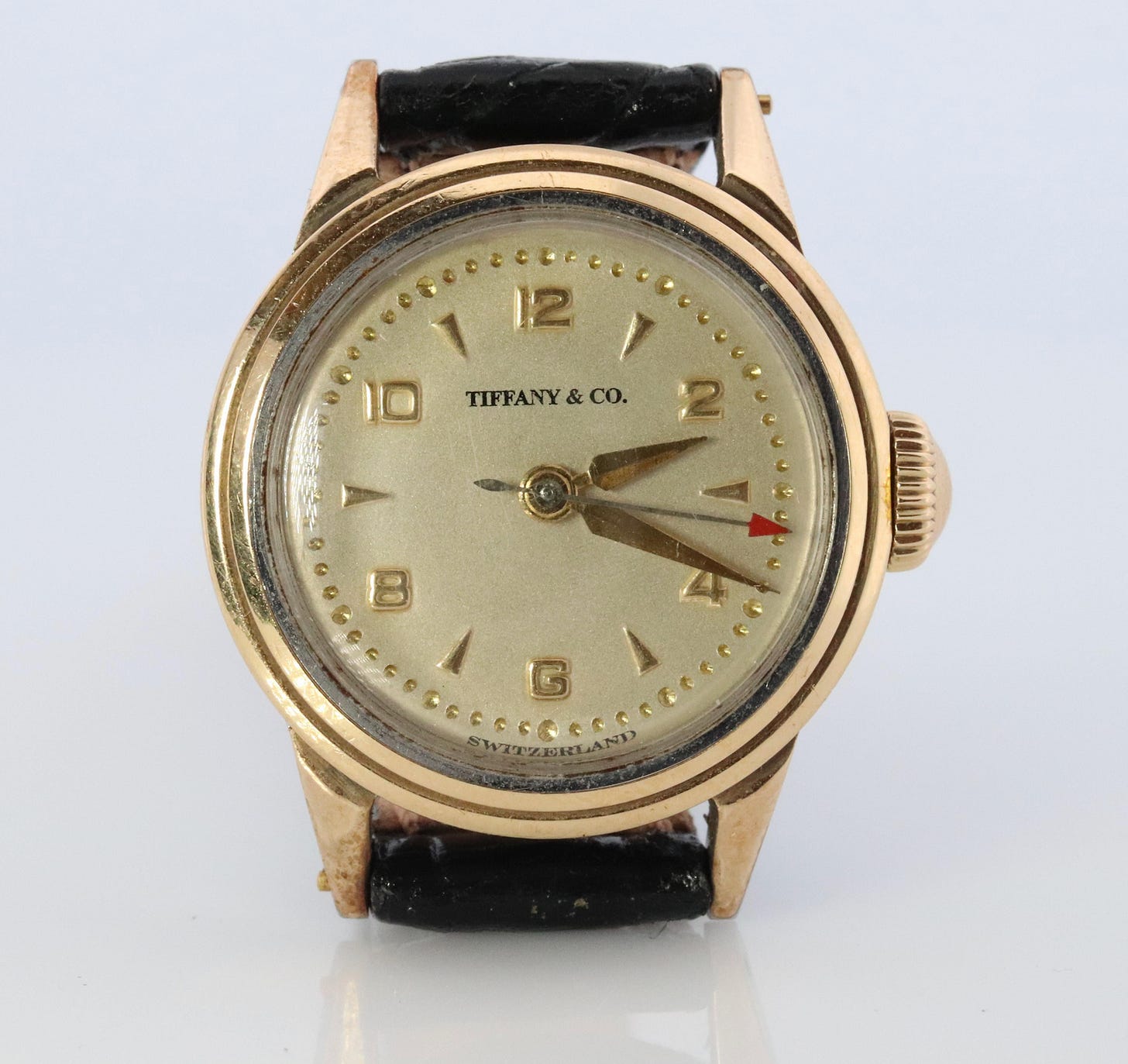When Two Names Are Better Than One
When Movado and Tiffany & Co. shared dial space in the 1940s, they didn't just create luxury watches—they invented a new grammar of prestige that still shapes how luxury brands collaborate today.
Necessity, Meet Opportunity
There's something faintly absurd about watching grown men bid thousands of dollars for a watch that bears two names on its face—as if one prestigious signature weren't enough to validate their worth. Yet in the peculiar mathematics of luxury, the Movado-Tiffany collaborations of the 1940s through 1960s proved that one plus one could indeed equal something greater than two. What emerged from this unlikely Swiss-American alliance wasn't merely a timepiece, but a template for how brands might seduce consumers by sharing, rather than hoarding, their mystique.
The partnership began, as most revolutionary ideas do, from necessity disguised as opportunity. Movado, that restless Swiss manufacturer founded in 1881, had spent decades perfecting the art of mechanical precision but found itself confronting a peculiarly American problem: how to penetrate a market that worshipped European craftsmanship yet demanded American retail credibility. Meanwhile, Tiffany & Co., perched regally on Fifth Avenue since 1837, possessed the kind of retail authority that could transform mere objects into cultural artifacts, but lacked the horological expertise to match their jewelry-making prowess.
A Dial of Equals
The solution they devised was audacious in its simplicity: share the dial. Not in the tentative manner of licensing agreements or the apologetic fine print of manufacturing partnerships, but boldly, with both names displayed as co-equals. The dual signatures often appeared prominently on the dial face—a visual partnership that suggested neither dominance nor submission, but collaboration between equals.
Roosevelt’s Wrist, America’s Message
Consider the cultural moment this partnership captured. By 1945, Americans had emerged from economic depression and global war into an era of unprecedented prosperity. The country that had once deferred to European taste now possessed both the confidence and the capital to redefine luxury on its own terms. When Franklin Delano Roosevelt received his Tiffany-signed Movado triple calendar as a birthday gift in January 1945—engraved with "Loyalty, Respect and Affection"—and wore it to the Yalta Conference, he wasn't simply telling time. He was broadcasting a message about American power accessorized by European craftsmanship, filtered through American retail sophistication.
Luxury Without Borders
The watch Roosevelt wore to negotiate the post-war world order embodied something new in luxury branding: the democratization of prestige through partnership. Here was Swiss mechanical excellence, available not merely to those who could navigate the rarefied world of La Chaux-de-Fonds, but to anyone who could walk into Tiffany's flagship store. The dual signature promised the best of both worlds—Movado's technical innovation and Tiffany's cultural authority—without the compromise typically associated with such arrangements.
A Strategic Coup in Two Fonts
From a strategic perspective, the partnership was remarkably sophisticated for its era. Movado gained immediate access to America's most prestigious retail channels, while Tiffany acquired genuine horological credibility without the messy business of developing in-house watchmaking capabilities. The Swiss manufacturer could focus on what it did best—creating revolutionary movements like the modular M90 and M95 chronographs—while the American retailer leveraged its unparalleled understanding of luxury consumption patterns.
Segmenting Sophistication
The product range they developed together reveals a nuanced understanding of market segmentation. The triple calendar complications appealed to executives who needed to project both sophistication and practicality. The M90 and M95 chronographs targeted the emerging class of American professionals who viewed precise timing as both functional necessity and social signaling. The elegant dress watches satisfied those who preferred their luxury understated but unmistakable. Each category bore the dual signature with equal prominence, suggesting a partnership of genuine equals rather than the usual manufacturer-retailer hierarchy.
Redundancy as Reassurance
Yet perhaps the most intriguing aspect of this collaboration was its psychological impact on consumers. The dual identity created a kind of luxury redundancy—if one prestigious name might be questioned, surely two could not. The Tiffany signature provided social validation for those uncertain about Swiss watchmaking terminology, while the Movado name reassured technically minded buyers that they weren't purchasing mere jewelry masquerading as horology.
A Watch for Every Persona
This redundancy served another purpose: it allowed consumers to project different aspects of their identity depending on the audience. In boardroom meetings, they could emphasize the Tiffany connection—American luxury, establishment credentials, Fifth Avenue sophistication. Among watch enthusiasts, they could highlight the Movado heritage—Swiss precision, technical innovation, horological expertise. The dual identity made the watches shape-shifters, adapting to whatever cultural moment demanded.
An Evolving Aesthetic, a Constant Promise
The partnership's longevity—spanning from the 1940s through the 1960s—suggests it succeeded not merely as marketing gimmick but as genuine business model. As Movado's production evolved from classic dress watches to sport chronographs to the futuristic Kingmatic designs of the late 1960s, the Tiffany signature remained, adapting to each new aesthetic while maintaining its essential promise of American luxury validation.
The Blueprint for Modern Collaborations
The collaboration ultimately redefined what luxury branding could be. Instead of the traditional model where prestige derived from exclusivity and opacity, the Movado-Tiffany partnership demonstrated that luxury could be enhanced through transparency and partnership. The dual signature didn't diminish either brand's mystique—it amplified it, creating a whole greater than the sum of its parts.
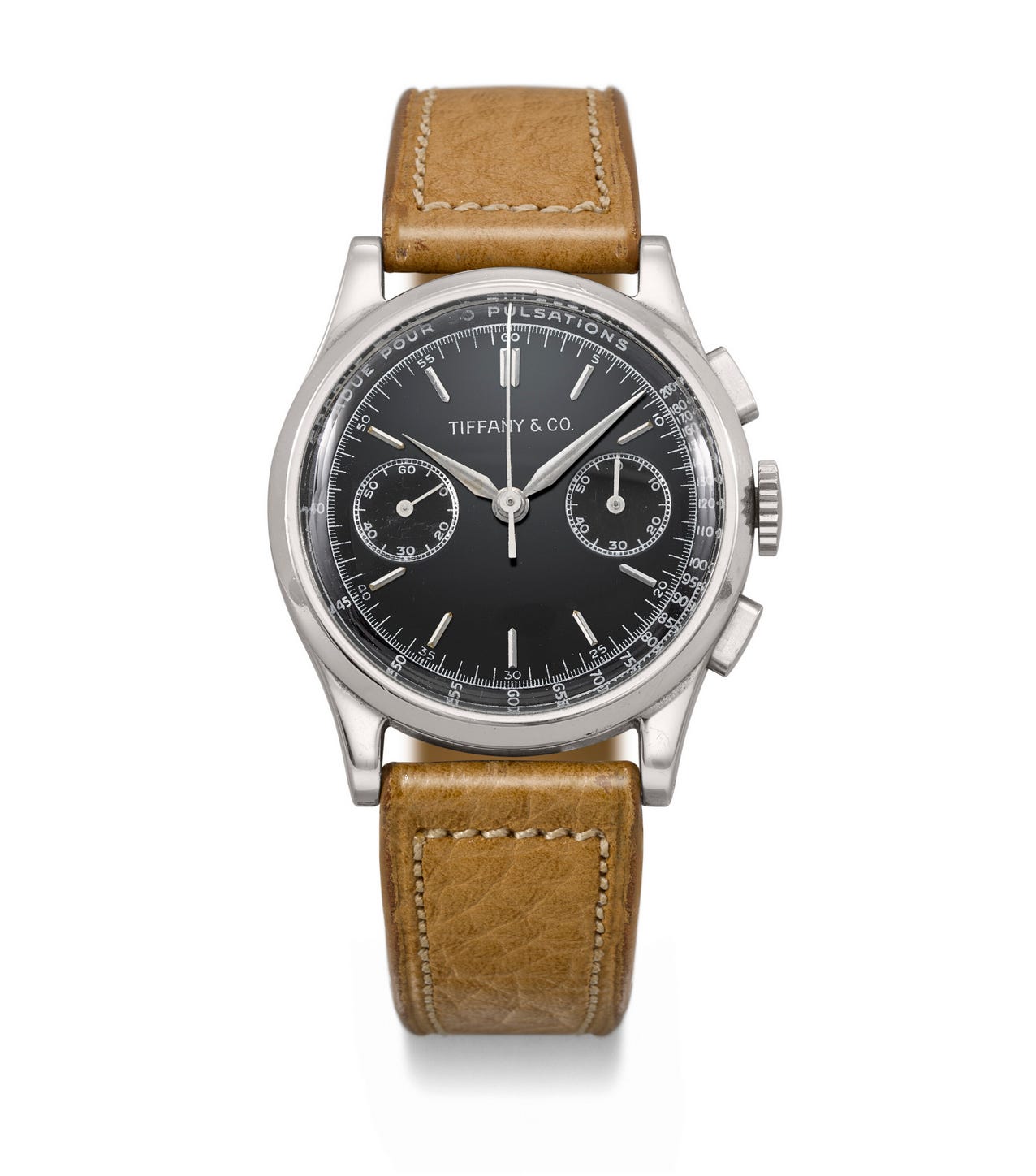
Lessons in Shared Mystique
When the partnership eventually faded in the 1970s, it left behind more than a collection of increasingly valuable vintage watches. It had established a template for luxury collaboration that would eventually evolve into today's endless parade of limited editions and cross-brand partnerships. Every modern luxury collaboration—from Patek Philippe's recent Tiffany Blue Nautilus to the countless fashion-house watch partnerships—owes something to that original insight: that in the peculiar mathematics of prestige, sharing identity can multiply rather than divide influence.
The watches themselves remain, scattered across auction houses and private collections, their dual signatures still proclaiming a lesson in brand strategy disguised as timekeeping. They remind us that luxury, perhaps more than any other category, thrives not on scarcity of access but on abundance of meaning—and that sometimes, the most radical act is not to guard one's mystique, but to share it.
Appendix A: Bibliography
Antiquorum. “Unique and Historically Important Wristwatch Gifted to and Worn by Franklin Delano Roosevelt.” Important Collectors’ Wristwatches. June 11, 2009. https://catalog.antiquorum.swiss/en/lots/lot-215-250
Hodinkee. “A Deep Dive into Tiffany & Co.'s Watchmaking History.” September 9, 2024. https://www.hodinkee.com/articles/tiffany-and-cos-untapped-watchmaking-potential
Wind, Eric. “Historical Perspectives: Your Complete Guide to the Watches of United States Presidents.” Hodinkee. February 17, 2022. https://www.hodinkee.com/articles/personal-timepieces-every-united-states-president-ever
SJX Watches. “In-Depth: Mid-Century Movado Chronographs.” March 1, 2021. https://watchesbysjx.com/2021/03/movado-chronograph-vintage-study.html
Oliver & Clarke. “Movado M95 Chronograph Ref. 19018 – 'Tiffany & Co.' Signed Dial.” https://oliverandclarke.com/products/movado-m95-chronograph-ref-19018-tiffany-co-signed-dial
1stDibs. “Tiffany and Movado Mechanical Movement 1950s.” https://www.1stdibs.com/jewelry/watches/wrist-watches/tiffany-co-x-movado-watch-tiffany-movado-mechanical-movement-1950s/id-j_24522602/
About the Author
Sergio Galanti is a journalist specializing in independent watchmaking and mechanical horology.



